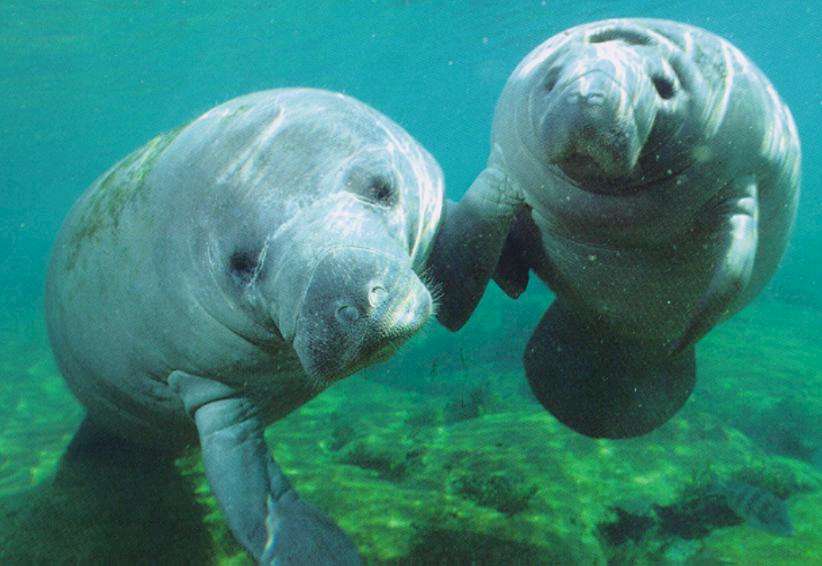Sea cows. Mermaids. Gentle giants. Whatever name you call them by, manatees are amazing animals and we’re lucky to share our waters with them here in Jupiter. But how well do you know these calm, lumbering creatures? Let’s find out:
Spotting a manatee
Manatees are aquatic mammals. They are unique in that there are only three known species of manatee – the Amazonian manatee, West African manatee and the species we are most familiar with in South Florida, the West Indian manatee. With bodies that measure 8 to 10 feet, two front flippers and tapered bodies with a flat tail, it’s easy to distinguish manatees from other large aquatic creatures. Manatees average 800 to 1000 pounds, but some may weigh as much as 3,500 pounds!
Where to find manatees
West Indian manatees are herbivores; they’re typically found in shallow, slow-moving coastal waters (bays, inlets, lagoons, rivers, estuaries) amongst the mangroves, sea grasses and other vegetation. During the summer, their range stretches north to Massachusetts down the eastern seaboard, throughout the Caribbean, down to South America and west to Mexico. Here in Jupiter, you’re most likely to see these creatures during the winter, lumbering and lounging in the Intracoastal just north of the inlet; you may also spot them swimming in the mild waters of the Loxahatchee River.
How to protect manatees
Although its population is growing steadily in Florida, the West Indian manatee is still considered an endangered species. Manatees are susceptible to disease and temperature-related illness, but the most common cause of death is due to human-related hazards, such as destruction of habitat and collisions with watercraft. You can help protect manatees by obeying all posted signs while boating, and by not feeding, touching or harassing them.
5 fun facts about manatees:
- West Indian manatees are actually related to elephants.
- Friend to all, the West Indian manatee has no natural enemies.
- Manatees must resurface every 3-5 minutes for air.
- Though you’ll typically see manatees humming along at a slow pace (5 mph), they can swim up to 20 mph for short bursts.
- Manatees spend most of their time traveling, eating and resting. (Sounds like a nice life, if you ask me!)
Have you had a local encounter with one of these majestic creatures? Tell us about it!

